In this easy step by step guide, we'll show you how to dehydrate celery.
Celery is an amazing vegetable that is rich in nutrients and fiber. It's also versatile and can be used in many different recipes to add a rich flavor.
But what do you do when you have a lot of celery and can't use it all up before it goes bad? One solution is to dehydrate it.
Food Dehydrator recipes like this one for dehydrating celery is a great way to preserve and store your favorite vegetables for later use.
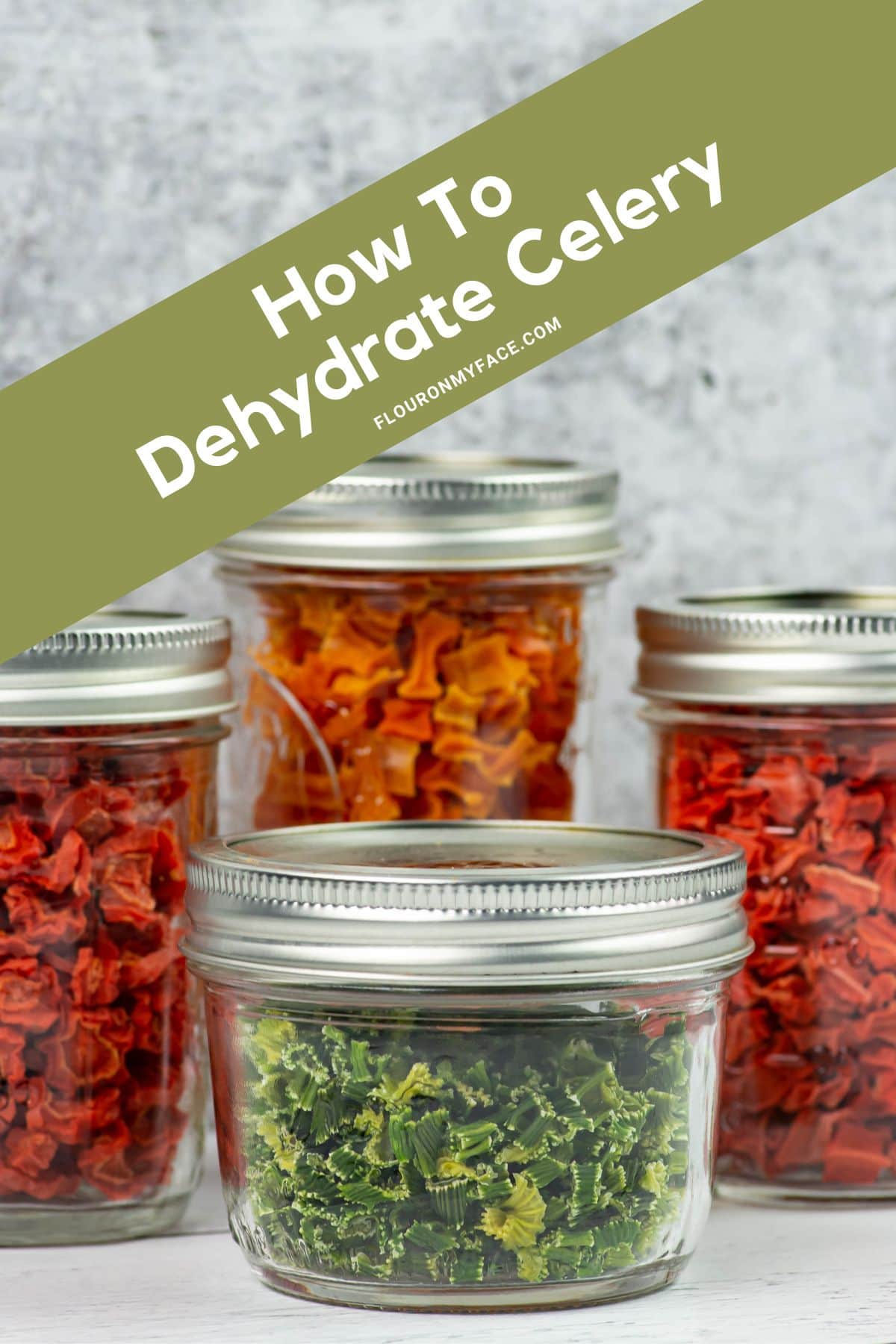
Ingredients & Equipment
Below is a quick look at the ingredients and equipment you will need. You can find the entire ingredient amounts and step by step directions in the recipe card below. P. S. You can also save your favorite recipes to your personal recipe box! ⬇️
- fresh celery
- cold water
- sink or tub
- large food dehydrator
- plastic mesh dehydrator screens
- storage containers: you have options when it comes to storage containers. Mason jars, plastic food storage, zip topped bags and mylar bags all will work. Some better than others.
FREE Dehydrating Guide
New to dehydrating and not sure where to start? Grab my free Dehydrating Quick Guide to get started.
👇See the step by step directions below!
Recipe Prep
- prepare fresh celery: cut the tops and bottoms off each head of celery. Place the individual ribs of celery in a sink or tub filled with cold water. Rub and rinse any dirt or debris that may be on the celery stalks. Drain the celery well and pat dry to remove as much water as possible.
- prepare the dehydrator: wash, rinse and dry well with a lint free towel the dehydrator trays to remove any residue or stickiness that may be leftover from the last time you used them.
Step by Step Directions
- Step 1: Wash and Trim the Celery: Before dehydrating celery, ensure you wash it thoroughly to remove any dirt or debris. Trim off the leaves and ends, and wash the individual stalks under running water. Once clean, pat them dry using a clean towel.
- Step 2: Cut the Celery into Thin Slices: When dehydrating celery, it's best to cut it into thin slices as this will help it to dehydrate uniformly. Using a sharp knife, cut the celery stalks into thin slices, approximately ¼ inch thick. Consistent thickness ensures that the celery will dehydrate evenly.
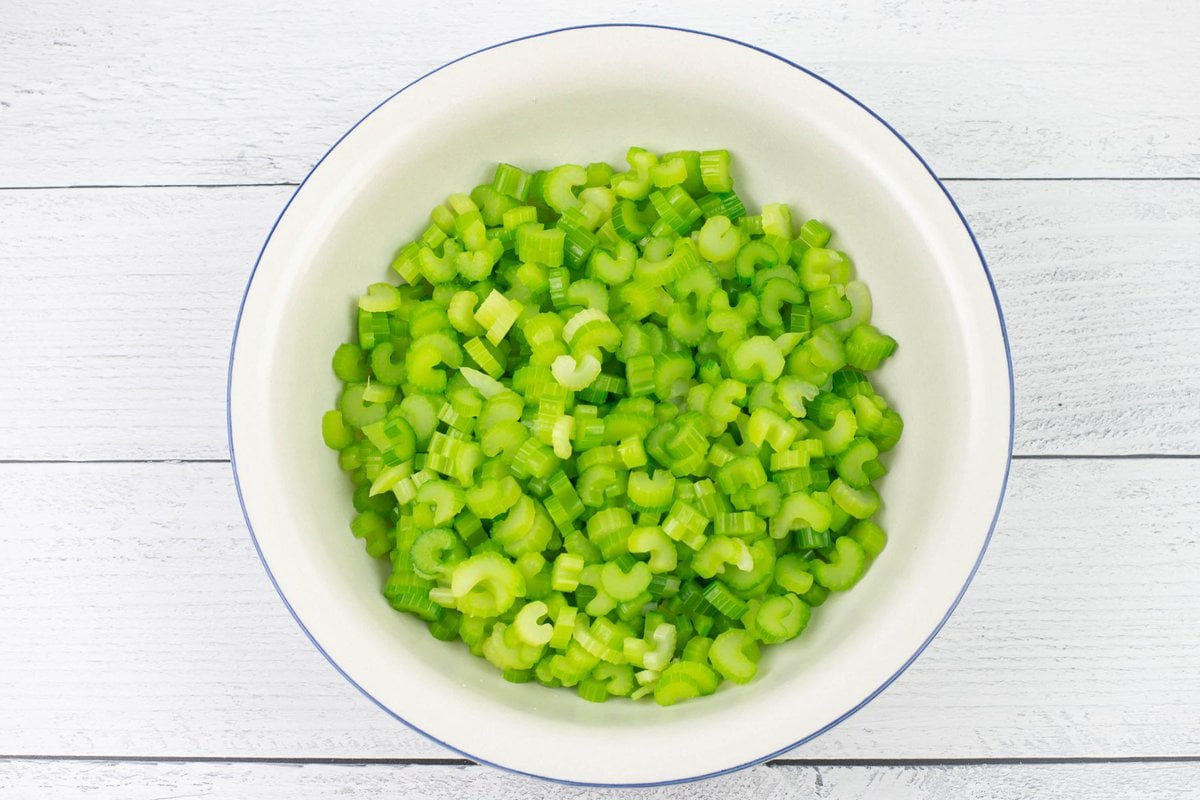
- Step 3: Preheat Your Dehydrator: Preheat your dehydrator to 125°F to 135°F. The temperature range should be within the recommended range for celery. Dehydrating at too high a temperature can cause the vegetable to cook instead of drying evenly. Also, dehydrating at too low a temperature can lead to the growth of bacteria and mold.
- Step 4: Arrange the Celery on the Dehydrator Trays: Arrange the sliced celery pieces on your dehydrator trays. Ensure there is some space between them for proper air circulation. Don't overcrowd the trays as this will lengthen the drying time.
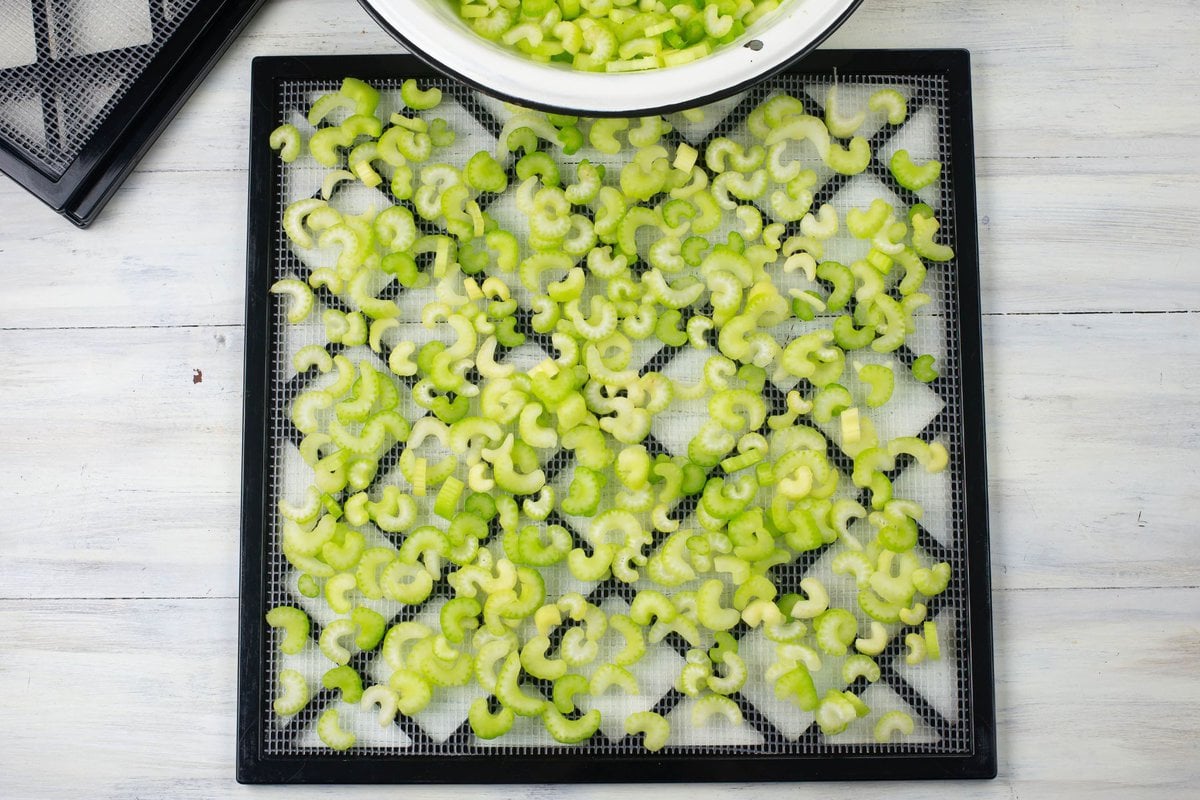
- Step 5: Dehydrate the celery: Slide the trays into the dehydrator and close the lid. Dehydrate the sliced celery for 8 to 12 hours or until the pieces are dried and crispy. Check frequently.
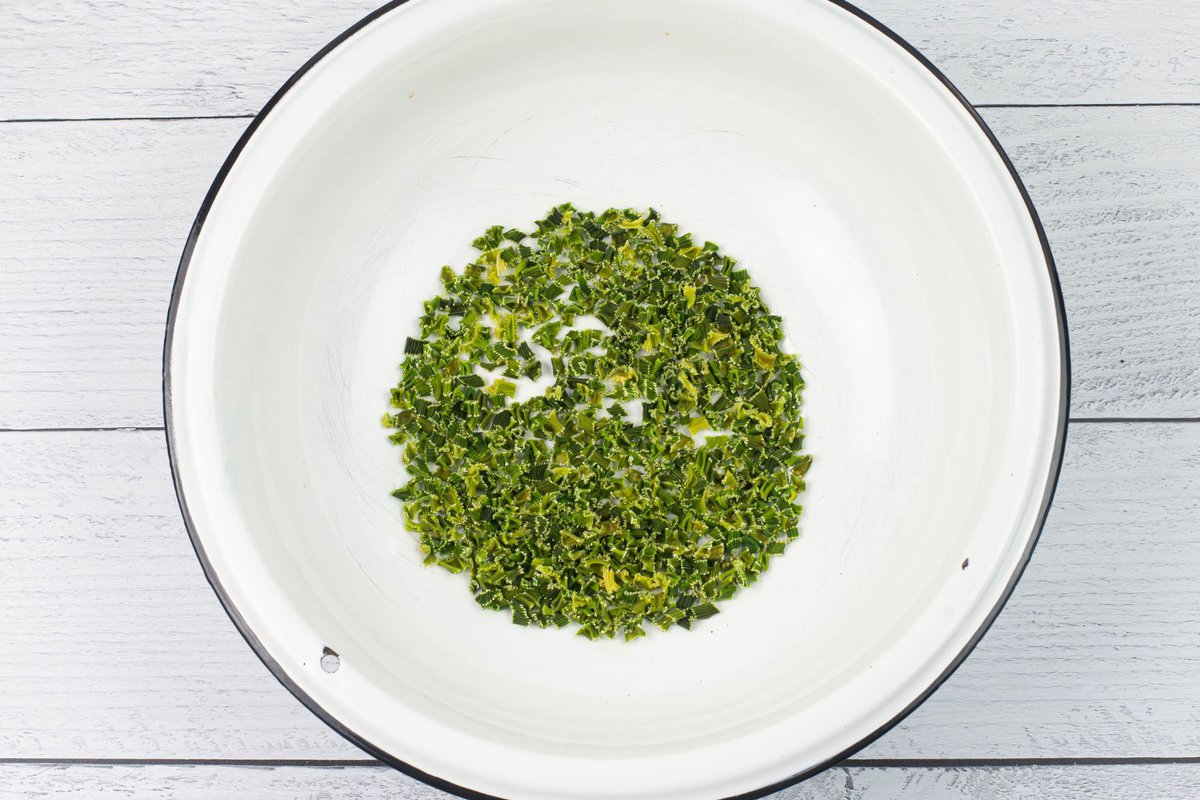
- Step 6: Store the Dehydrated Celery: Once the celery is properly dehydrated, it's time to store it away. You can either store it in a mason jar, a ziplock bag or a vacuum-sealed container. Ensure that the container is airtight and kept in a cool and dry place. Dehydrated celery can last for months and even years if stored properly, ensuring you will always have some on hand for your recipes.
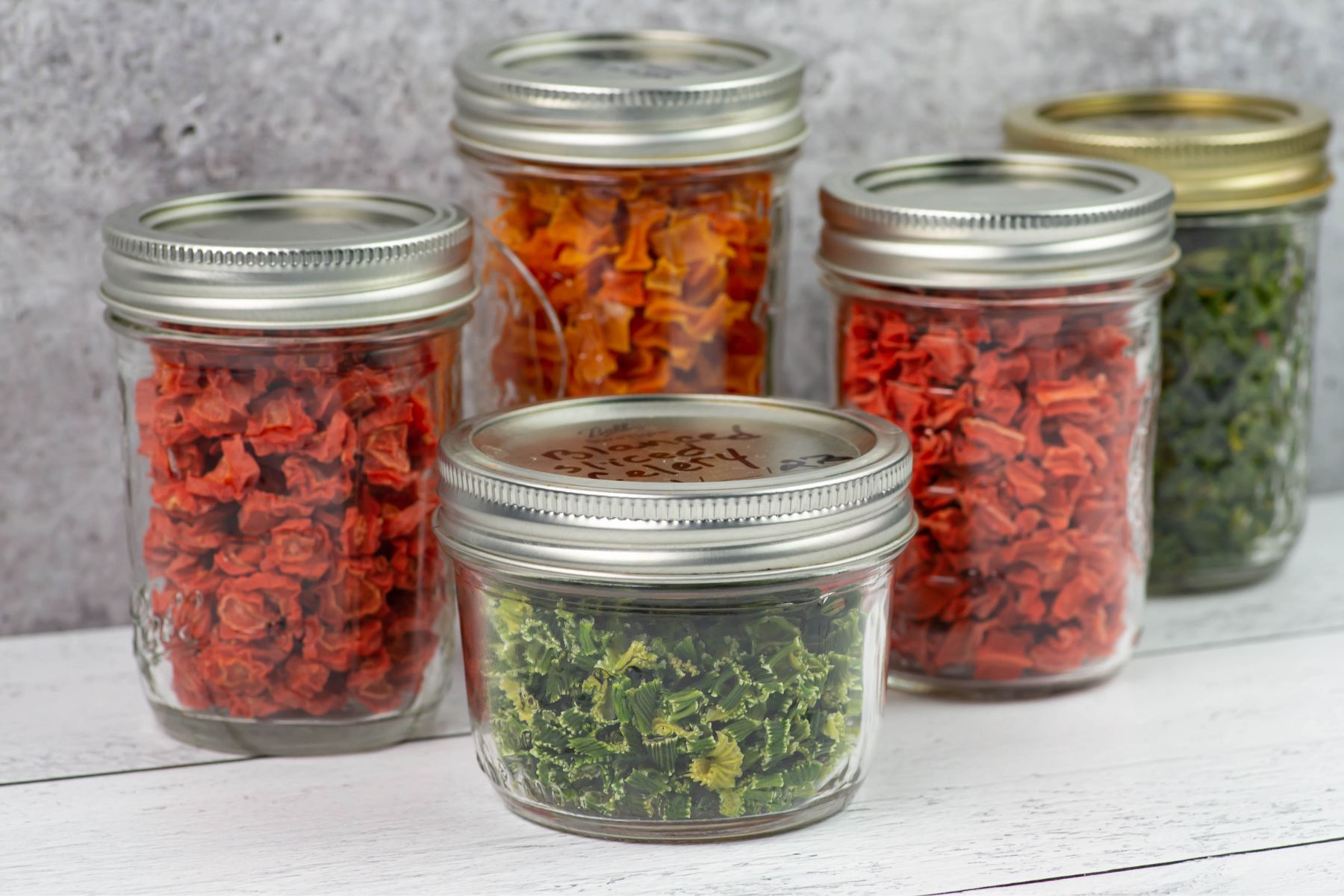
Dehydrating celery is a smart way to preserve your celery supply while ensuring that it retains its flavor, vitamins, and nutrients.
With these simple steps, you can easily dehydrate celery and store it for future use. Dehydrated celery is perfect in soups, stews, casseroles, and more. Enjoy!
Suggested Uses
Dehydrated celery is a versatile ingredient that you can use in various meals, and it offers a long shelf-life too! Here are some suggestions on how to use it:
- As a Seasoning: Rehydrate the celery by soaking it in water, then chop and sprinkle it over soups, casseroles, stews, and meats to add an earthy and savory flavor.
- In Salads: You can use celery flakes or powder to enhance the flavor of your salads, whether they're savory or sweet. Combine it with other dehydrated vegetables for a colorful and nutritious meal.
- In Spices blends: Celery seeds are utilized in many spice blends, such as Cajun seasoning or vegetable broth powder. They add a pungent and slightly bitter taste that complements the other spices.
- As a Garnish: sprinkle some dehydrated celery over your appetizers, rice, or pasta dishes to give them a fresh and crunchy texture.
- For Making Celery Juice: Our dehydrated celery powder is perfect for creating fresh celery juice. Simply add a tablespoon of powder to your glass of water, and stir well until it dissolves. Enjoy your daily dose of nutrients.
Overall, dehydrated celery is an excellent ingredient that can improve the flavor and nutrition of all kinds of dishes. It's also easy to store and use whenever you need it. Happy cooking!
Recipe FAQS
A food dehydrator is the best and easiest way to dehydrate celery.
Dehydrating celery at the optimum temperatures of 125 F. degrees will take approximately 8 to 12 hours depending on the thickness of the celery and how packed the trays are.
Celery is done dehydrating when all of the moisture is removed. It will feel dry to the touch. It should be hard and crispy.
📌Pro Cooking Tips
- Food dehydrators can be bought for as little as $30. You can upgrade the model later.
- Food Grade Oxygen Absorbers will extend the shelf life of all dried foods.
- Dehydrated celery will shrink down to a very small amount and can easily be stored.
More Dehydrating Recipes
Check out more of my dehydrating recipes you can make to stock your pantry.

⭐Leave a Star Rating
Have you tried the recipe? Leave a star rating in the recipe card below to let me know how the recipe turn out.
Email questions or recipe requests to flouronmyface@gmail.com. Follow me on Pinterest, YouTube, Instagram and Facebook.
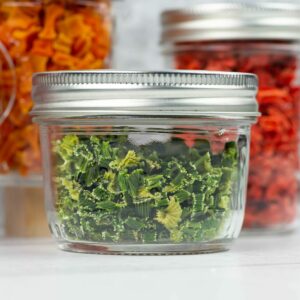
How To Dehydrate Celery
Equipment
Ingredients
- 3 Large heads fresh celery
- 10 cups cold water
Instructions
Recipe Prep
- Cut the tops and bottoms off each head of celery. Place the individual ribs of celery in a sink or tub filled with cold water. Rub and rinse any dirt or debris that may be on the celery stalks. Drain the celery well and pat dry to remove as much water as possible.
- Wash, rinse and dry well with a lint free towel the dehydrator trays to remove any residue or stickiness that may be leftover from the last time you used them.
Dehydrate the celery
- When dehydrating celery, it's best to cut it into thin slices as this will help it to dehydrate uniformly. Using a sharp knife, cut the celery stalks into thin slices, approximately ¼ inch thick. Consistent thickness ensures that the celery will dehydrate evenly.
- Preheat your dehydrator to 125°F to 135°F. The temperature range should be within the recommended range for celery. Dehydrating at too high a temperature can cause the vegetable to cook instead of drying evenly. Also, dehydrating at too low a temperature can lead to the growth of bacteria and mold.
- Arrange the sliced celery pieces on your dehydrator trays. Ensure there is some space between them for proper air circulation. Don't overcrowd the trays as this will lengthen the drying time.
- Slide the trays into the dehydrator and close the lid. Dehydrate the sliced celery for 8 to 12 hours or until the pieces are dried and crispy. Check frequently.
- Once the celery is properly dehydrated, it's time to store it away. You can either store it in a mason jar, a ziplock bag or a vacuum-sealed container. Ensure that the container is airtight and kept in a cool and dry place. Dehydrated celery can last for months and even years if stored properly, ensuring you will always have some on hand for your recipes.
Recipe Expert Tips
- Food dehydrators can be bought for as little as $30. You can upgrade the model later.
- Food Grade Oxygen Absorbers will extend the shelf life of all dried foods.
- Dehydrated celery will shrink down to a very small amount and can easily be stored.
- Use in soups, stews, salads, spice blends, to make celery powder and as a garnish.



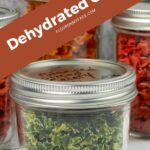
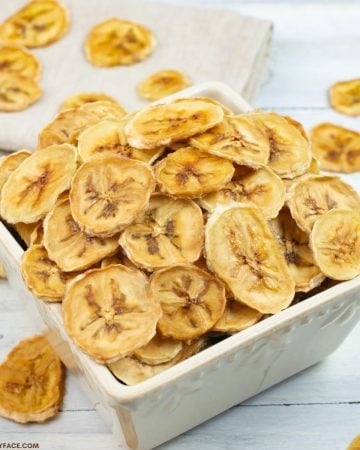
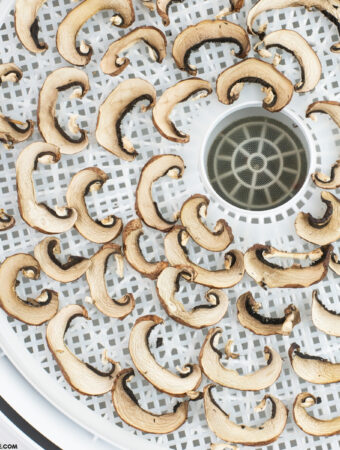
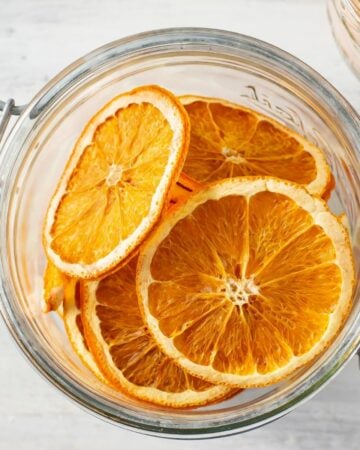
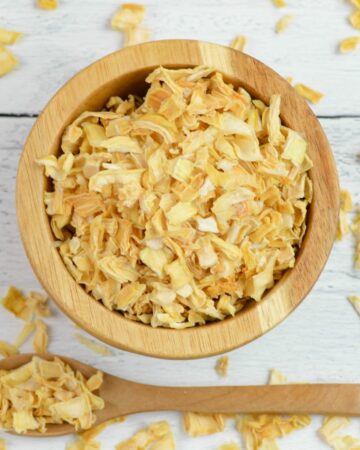
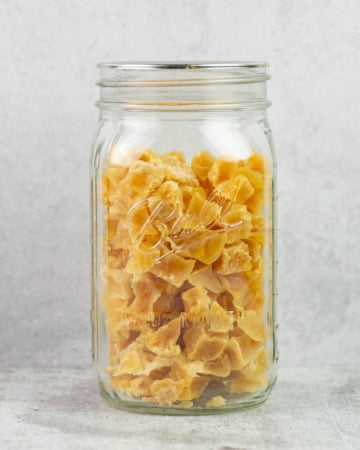
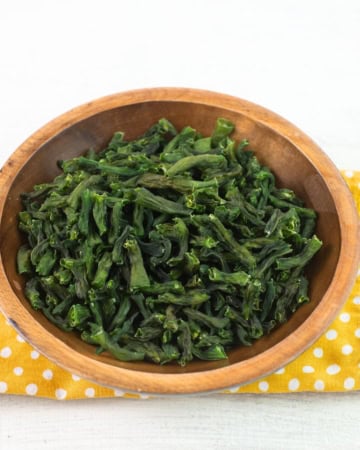
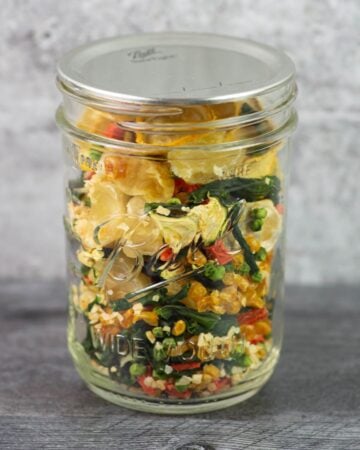
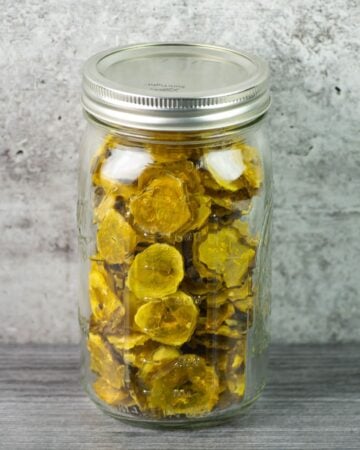
Leave a Reply